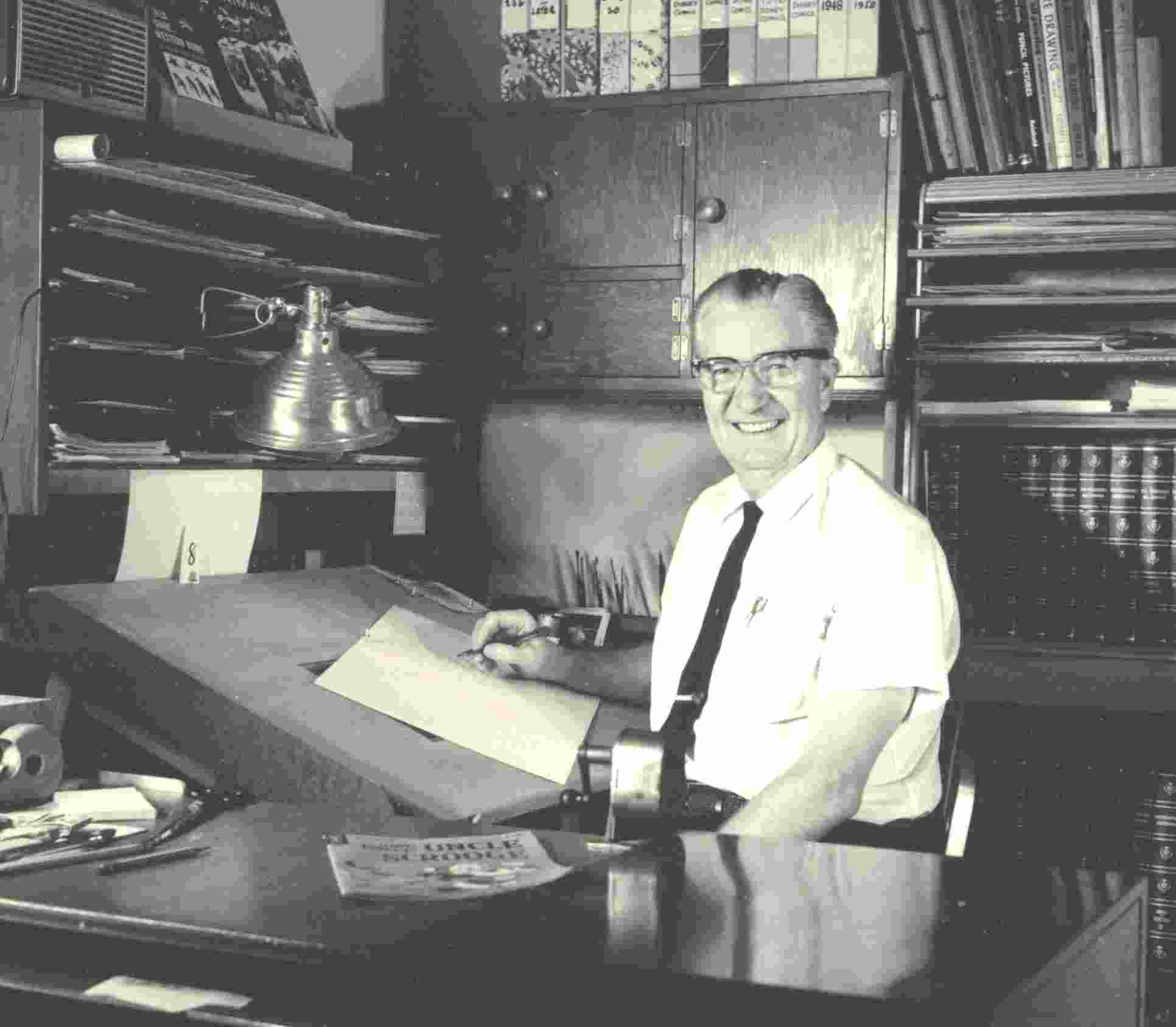

During his 25 years as a comic book artist, Carl Barks must have used mountains of paper and oceans of ink to achieve the amazing results that we still look at today. This page shows a small portion of the different materials that are essential to produce any comic page, and all the art supplies shown were commonly used by Barks.
|
It takes many steps to draw a comic book page. After the starting stages of getting ideas and writing them down, the artist must do layouts, sketch the characters and backgrounds, tighten the drawings and finally do the lettering. The materials and tools that Barks used for his artwork is described below. |
 |
PAPER
Barks used Strathmore 500 Series Mediumweight Bristol. My best work has always been on Strathmore medium surface. In the old days I was furnished with Strathmore, and my style was more detailed and the characters more expressive. Then along in the middle fifties the office got on a money-saving kick and began furnishing us artists with a clay-coated import from Germany. The pencil and pen dug into the surface and couldn't be guided with any finesse. The result was a tightening of the lines, less bounce to the characters. |
SKETCHING
|
|
|
INKING
|
Barks used
various pens and brushes for inking and his preference changed
over the years.
Here is a selection of what he used:
|
|
|
| http://www.cbarks.dk/THETECHNIQUE.htm | Date 2003-01-09 |